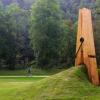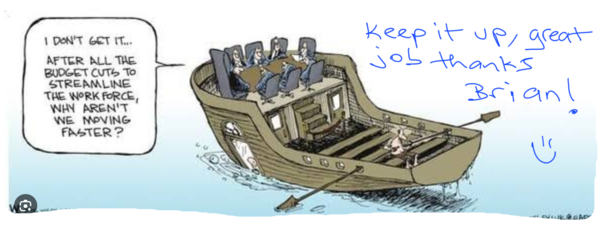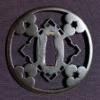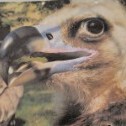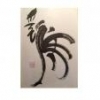All Activity
- Past hour
-
語弊熨斗鈴家紋 語弊熨斗鈴家紋 - 検索 画像 (bing.com) 語弊熨斗鈴家紋 - 検索 画像 (bing.com) Maybe we need to add 鈴 suzu (cat bells) to our search parameters. PS Oh, no, that was George above that added those!!!
-
As expected, I couldn't find an exact match Here are two examples which, however, differ in the arrangement of the paper strips: To simplify, guess we can call it "丸に違い幣" (Maru ni chigai hei).
-
robinalexander started following Hate to ask....but..
-
-
It is likely texture, made before the patination process. The tekkotsu may be possible, but as I recall, even when tsuba are made with recycled materials, they are typically done with the least amount of forging possible, so these here are too small. Nowadays, some craftsmen do patination in two steps: rust once fully, then remove the rust with some acid, and redo it once more. This will increase the roughness of the surface, and may cause some pitting.
-
Still available!
-
Chigai Gohei, yes, and it also has elements of Noshi papers in it. 熨斗家紋 - 検索 画像 (bing.com) Another example... 語弊熨斗家紋 - 検索 画像 (bing.com)
- Today
-
A ship can't sail without its helmsman
-
I imagine that its just very small areas of the surface that have failed to patina or eroded patina. For reasons such as wear and handling, rust flaking off and what not.
-
If you have a relative humidity of 45% at a room temperature of 25°C, then the dew point is about 12.3°C, but it is not very important The storage space (cabinet/ safe) has insulating properties and so does the shirasaya, so the temperature of the blade does not drop quickly
-
I understand that tekkotsu appears in the rim area and consists of granular or linear embossed elements. In this case here we have flat dots all over the plate, which are gleaming in angular light, but are black in normal view. Florian
-
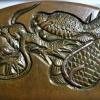
Is now a good time to buy swords from Japanese dealers?
Alex A replied to dyn's topic in General Nihonto Related Discussion
I'm not very savvy with money Lewis. Though i think i did open an account a few years ago and never used it, possibly a different company. Will look into it, cheers. -
Is now a good time to buy swords from Japanese dealers?
Lewis B replied to dyn's topic in General Nihonto Related Discussion
Get yourself a Wise account and buy the yen now. Your nuts will thank you. -

Is now a good time to buy swords from Japanese dealers?
Alex A replied to dyn's topic in General Nihonto Related Discussion
Agree prices have remained the same and now is a good time to buy due to the weaker Yen. Ordered a tanto to be made and agreed on a price. A little concerned the Yen rate will have changed by the time its made and i will be hit with a kick in the nuts lol -

Is now a good time to buy swords from Japanese dealers?
Schneeds replied to dyn's topic in General Nihonto Related Discussion
I don't have much experience or knowledge, but strictly on a basic economic level early 2021 saw the JPY at around 103 to 1 USD, compared to around 154 right now, an increase of around 48%. I was able to track the sales history of some swords I was interested in recently (with some help) and the prices only marginally increased over the past few years, essentially keeping with inflation as Brian noted above. So on a basic level, your dollar will go a lot farther now. That being said, I think it is only a good time to buy if 1) you would otherwise be in the market for a sword anyway (i.e. you have discretionary funds available and set aside), 2) you know what you want and why you want it, 3) what you want is available and in the condition you want it in, and 4) the price is reasonably within range of comparable offerings across the market. If answer to those is yes, then you will either save a decent chunk of money, or get a finer specimen than you might have earlier in the decade -
I'm still largely with Darcy in my opinion of not needing to use uchiko. I stated the above to show that proper use very occasionally shouldn't damage swords if done properly and with high grade uchiko. But for the average person, on polished swords, just use the isopropyl alcohol and microfiber cloth method, and a very light oiling. And as seldom as possible. I use uchiko on project blades totally out of polish, that barely show a hamon and are completely stained. The red and black stuff that comes off is incredible. Over months and years, the hamon will appear and rust will stabilize. Oiling is also vital. But stick to these out of polish blades. If it reduces the temptation to grab something more abrasive, then win win. So with uchiko, generally just don't use it on polished swords.
-

Is now a good time to buy swords from Japanese dealers?
Brian replied to dyn's topic in General Nihonto Related Discussion
Imho, Japanese prices have largely stayed the same, and there is a benefit if you are spending $'s or Euros. Doesn't help those of us whose currency fall matches the Yen...but for the rest of you, there are considerable benefits. -
Really appreciate it folks. You guys keep this place going, I'm just the driver :-)
-
@Bruce Pennington Did you notice the #40 XXXX?
-
dyn started following Is now a good time to buy swords from Japanese dealers?
-
This is a question mainly to those who have been in the hobby for a while: Is now a good time to buy from Japan due to the weak yen? I saw an enju katana I really liked on aoi https://www.aoijapan...a-mumei-den-enjyu-2/ for 920k yen. 920k yen would've been about $9200 USD a few years ago but now is closer to 5-6000 USD. So my question is, is now a good time to buy from dealers out of Japan (since other currencies now go further)? Or did dealers raise the prices in JPY to compensate for the weaker yen? I don't have a historical price chart of katanas so I'd like to know what everyone thinks.
-
maybe Yasuyoshi? The yasurime in this case looks like "takanoa" Mino Yasukuni however is always kiri yasurime
-
I've benefited greatly from this site, it's members and your efforts. Another new gold member here!
-
I respect you chiming in - Indeed you’re right no smell no evidence of tempering (artificial aging) black rust as nambokucho and the latter and then the 2nd one - that’s Kanemoto? Or Kanemitsu :D or earlier … no clue.. thank you for the input nonetheless ! apparently nbthk remains the last resort for dreamers as myself lol dont mind the irony yv
-
John, info and examples of Kanenori in this NMB download:
-
Ed Marshall of Yakiba.com is in Louisiana, if that is not too far.
-
SHO stamp (for showato)





